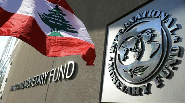
The transmission effect or exchange rate pass-through reflects the impact of currency depreciation on price levels, particularly their elasticity, driven mainly by changes in the prices of imported goods and services.
This is especially relevant for Lebanon, which experienced a historic currency devaluation from 2020 to 2023, with its economy heavily reliant on imports.
The pass-through rate, measured as a percentage, tracks the change in import prices following a 1% rise in the exchange rate between exporting and importing countries. If import prices adjust proportionally to the exchange rate, the pass-through is considered perfect.
In a research note, BlomInvest calculated the pass-through effect by measuring the exchange rate depreciation as a percentage of the ratio of goods and services imports to Gross Domestic Product (GDP). This means that the transmission of exchange rate fluctuations to domestic prices (inflation) is estimated based on the significance of imports within the economy, as measured by GDP. Essentially, the greater a country's dependence on imports, the more pronounced the effect of currency depreciation will be on domestic prices (inflation).
Governmental Subsidies
In 2020, the pass-through effect surpassed the inflation rate, reaching 135.7% compared to 112.4%. This indicates that the expected impact of exchange rate depreciation should have been more significant than the actual inflation. The discrepancy can largely be attributed to government subsidies, which likely mitigated the effects of depreciation on consumer prices.
However, from 2021 to 2023, inflation rates significantly exceeded the pass-through effect, suggesting that additional factors, beyond exchange rate depreciation, contributed to rising prices.
In 2022, for example, the disparity was huge: inflation soared to 168.5%, while the pass-through effect was only 52.2%, resulting in a staggering 116.3% excess in inflation over the anticipated pass-through effect. The differences were also notable in previous years, with a gap of 51% in 2021 and 87.5% in 2023.
Market Distortions
The research note emphasizes that the excessive inflation observed cannot be attributed solely to global or traditional factors for several reasons. First, global inflation did not exceed 8.5% during this period, which is significantly lower than the staggering rates recorded, such as the 168.5% in 2022. Furthermore, the increase in labor costs does not account for this inflation, as the minimum wage dropped from $450 in 2019 to only $200 in 2024.
Thus, this disproportionate inflation appears to be driven by structural market issues, including monopolistic pricing, collusion among businesses to sustain high prices, and a lack of official price regulation and oversight.
Looking ahead to 2024, the research note predicts that the gap between inflation and the pass-through effect will exceed 35.4%. This scenario stems from a slight 0.3% improvement in the exchange rate over the year; however, this progress is likely to be insufficient to meaningfully reduce inflation.
Read more





Comments